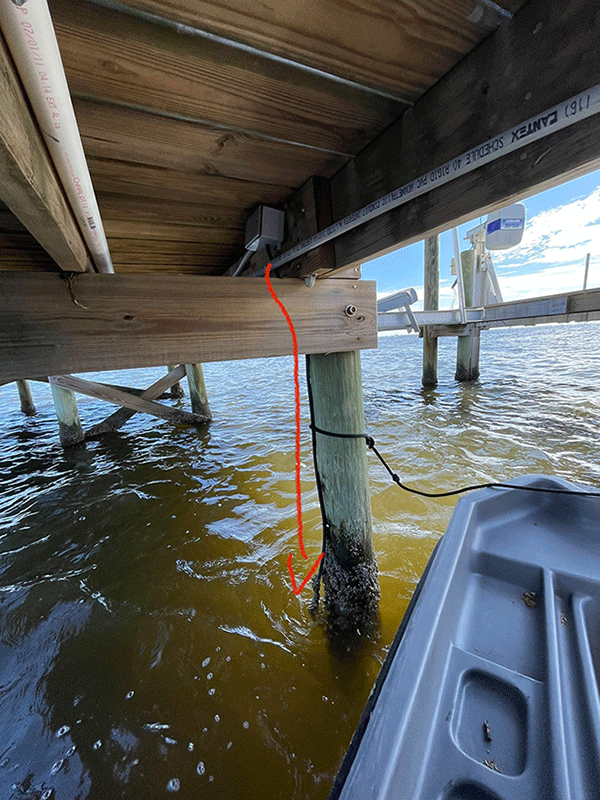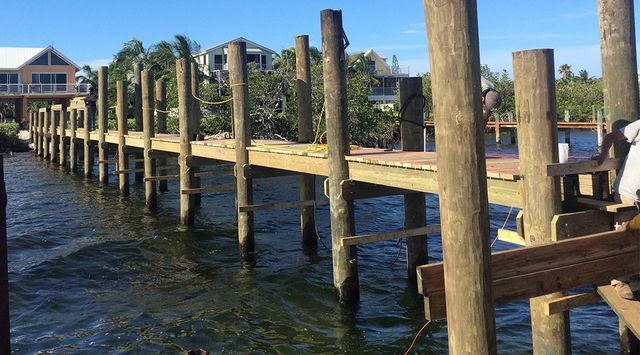The Importance of Timely Dock Repairs for Beachfront Safety
Reliable Dock Fixing Techniques: Making Certain Structural Honesty
Making certain the structural stability of docks through effective fixing strategies is extremely important for the long life and security of aquatic centers. This includes a multi-faceted technique beginning with thorough inspections making use of advanced innovations like finder equipment and remotely ran cars (ROVs) to identify both visible and concealed problems. Ultimately, picking the right repair service materials, such as corrosion-resistant alloys and composite products, is important for longevity. Architectural reinforcement techniques, including the execution of cross-bracing systems and load-distribution plates, play an important role in mitigating tension points. The relevance of these strategies comes to be obvious when exploring advanced repair service methods and preventative maintenance methods.
Assessing Dock Damages
Analyzing dock damage is a crucial initial step in making sure the structural stability and safety and security of any type of docking center. This first analysis involves a comprehensive evaluation to identify both visible and covert damages. Trick facets to analyze include the dock's structure, pilings, decking, and equipment. Each component has to be inspected for indications of wear, rot, corrosion, or various other kinds of deterioration that could jeopardize the architectural honesty.
Structural designers or certified assessors normally perform these evaluations utilizing specialized strategies and tools. Undersea examinations could utilize finder tools or remotely operated vehicles (ROVs) to detect submerged damage. Above water, aesthetic examinations are complemented by utilizing wetness meters and other analysis tools to discover underlying concerns not quickly noticeable to the nude eye.

Choosing Repair Work Materials
Choosing the appropriate repair materials is an essential action in the dock reconstruction process, one that directly influences the longevity and performance of the fixed structure. Product option need to be driven by elements such as ecological problems, load-bearing requirements, and compatibility with existing dock elements.
In enhancement to wood, composite products are progressively prominent due to their toughness and low maintenance needs. Compounds, normally made from a mix of plastic and timber fibers, use outstanding resistance to rot, bugs, and UV damages. For steel anchors, picking corrosion-resistant alloys such as galvanized steel or marine-grade aluminum is vital to protect against rust and make certain architectural stability in saline water conditions.
Epoxy materials and marine-grade sealers are essential for fixing fractures and securing joints, providing a water resistant obstacle and improving the dock's general strength. By meticulously selecting top quality materials, dock repairs can attain long-lasting results, therefore securing against future degradation and ensuring risk-free, trusted usage.
Architectural Reinforcement Strategies
Effective structural reinforcement techniques are important in guaranteeing the security and longevity of dock repair services. One essential method involves the usage of steel or composite reinforcement bars (rebar) within concrete structures. Rebar provides added tensile stamina, protecting against fractures and distributing loads more evenly. This technique is particularly reliable for docks subjected to hefty lots or harsh ecological problems.
Another essential method is the application of fiber-reinforced polymers (FRP) These products provide high strength-to-weight proportions and exceptional resistance to deterioration, making them perfect for strengthening wooden or concrete docks. FRP can be used in strips or sheets and bound with epoxy materials to boost structural stability.
Bracing and anchoring systems likewise play a vital role in structural reinforcement. Cross-bracing, utilizing metal or wood light beams, can counteract side pressures, minimizing swaying and motion. Securing systems, such as helical piers or driven heaps, supply a steady structure by moving tons to much deeper, extra secure dirt layers.
Finally, the assimilation of load-distribution plates can assist distribute weight much more uniformly across the dock's surface, alleviating local tension factors. These strategies jointly make sure that docks remain secure and robust, efficient in holding up against the rigors of their functional atmosphere.
Advanced Repair Service Methods

Another sophisticated method includes undersea welding, which enables repair work to be carried out without the requirement to dewater the area. This approach is specifically beneficial for attending to structural problems in immersed dock components, ensuring marginal interruption to procedures. Enhanced welding strategies, paired with robotic systems, deliver precision and dependability, thereby extending the life expectancy of the dock.
Additionally, cathodic protection systems are carried out to avoid corrosion in metal dock frameworks. By making use check it out of sacrificial anodes or amazed current systems, these strategies efficiently reduce the electrochemical procedures that result in product damage.
Finally, progressed monitoring innovations, such as structural health and wellness tracking (SHM) systems, give real-time data on the problem of dock frameworks. These systems enable proactive upkeep and prompt treatments, eventually making certain the long-lasting architectural stability of the dock.
Upkeep and Avoidance
Upkeep and prevention are basic concepts that underpin the durability and safety and security of dock frameworks. Normal assessments are paramount, enabling very early detection of deterioration, prospective weak points, and ecological effects. A positive strategy, including routine look for deterioration, rot, and architectural changes, minimizes expensive fixings and prolongs the dock's functional life.
Safety nets should include applying protective coatings to metal elements to safeguard against corrosion and utilizing treated timber to stand up to degeneration. Additionally, guaranteeing correct drain and ventilation can stop water buildup, which is an usual root cause of architectural destruction. Integrating high quality products and adhering to supplier guidelines throughout construction and repair phases additionally play important roles in improving longevity.

Training personnel in dock upkeep ideal techniques ensures consistent application of preventative measures. Leveraging technical advances, such as drones for assessments and sensors for real-time surveillance, can even more boost maintenance initiatives. By prioritizing upkeep and avoidance, dock proprietors can ensure architectural integrity, operational safety, and cost-effective management over the dock's lifespan.
Conclusion
In conclusion, preserving the architectural stability of marine facilities requires detailed dock repair methods. Advanced repair service techniques, combined with regular maintenance practices, ensure the dock stays operational and safe under varied environmental problems.
Making sure the structural stability of docks with reliable repair techniques is vital for the longevity and safety of marine facilities.Selecting the suitable fixing products is a crucial action in the dock remediation process, you could try these out one that straight affects the durability and efficiency of the repaired structure.Effective architectural support techniques are this post important in making sure the security and durability of dock fixings. By prioritizing maintenance and prevention, dock proprietors can guarantee structural stability, functional safety and security, and cost-effective management over the dock's life-span.
In verdict, preserving the structural honesty of marine centers demands comprehensive dock repair work methods.